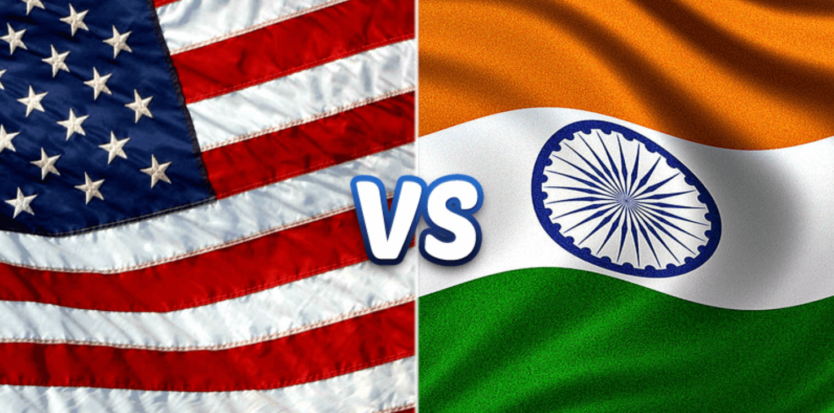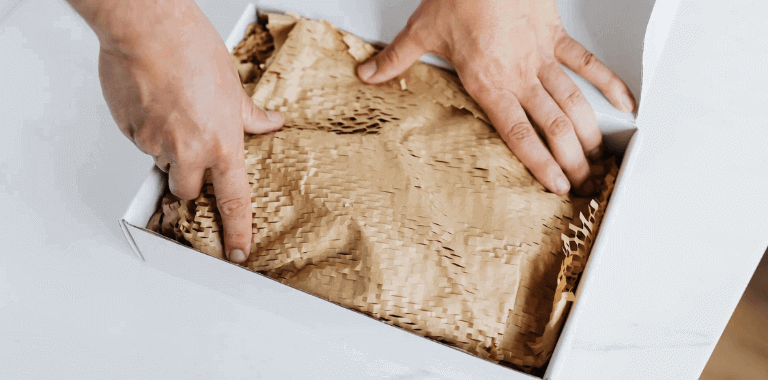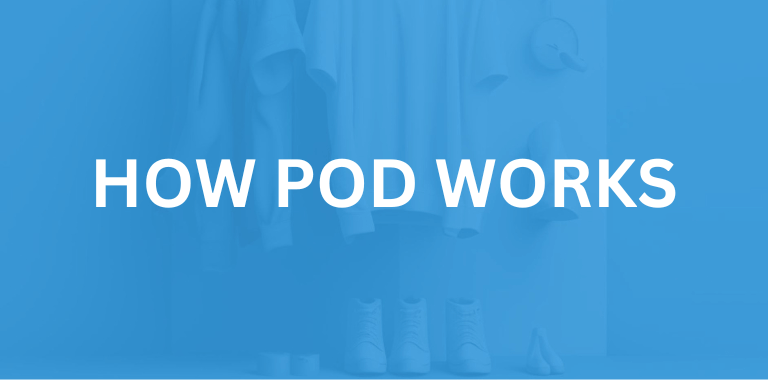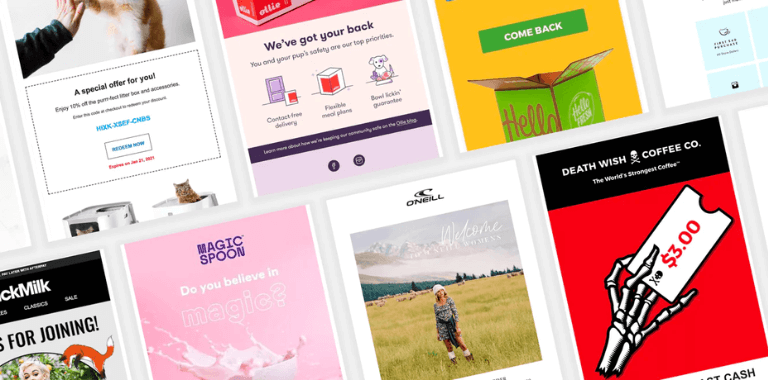You can sell in whichever country or location you want.
A successful and profitable eCommerce brand can be built by selling in any country. But, there are some factors that must be kept in mind before you make a choice.
For the brand that I run, Kalmin Ross, we’re currently selling in India and US both. We treat both our websites as 2 separate businesses. Because they’ve got their own challenges, problems, processes, advantages and disadvantages.
In this post we’ll compare selling in India and the Big4 (US, UK, AU, CA), mainly US in terms of 14 factors:
- Market Familiarity
- Brand Control
- Level of Support
- Being Authentic
- Building Customer Relationship
- Market Competition
- Start Up Capital Needed
- Ease Of Accepting Payments
- Company Structure
- Shipping Times
- Time Investment
- Profit Potential
- Product Sourcing
- Peace of Mind
We’ll do comparisons between selling in India and US for all these factors. In the end, I’ll also summarise the comparison and make you a recommendation based on your preferences right now.
Lets begin:
- Market Familiarity
You will always have better understanding of people from the country and culture you belong to.
It is definitely possible to learn about a niche which exists in some other country. But, learning about a niche within your own country is far easier and better.
I, being an Indian, understand the buyer psychology, behaviour and mindset of Indians a lot better than that of people in the US. Simply because I’ve grown up in India, I’m surrounded by Indians and I’m sort of part of my own brand’s target audience.
So in terms of market familiarity I’d rate India and US as:
- India: ⭐️⭐️⭐️⭐️⭐️
- US: ⭐️⭐️
2. Brand Control
You can control the quality, shipping and branding way more if you’re running your brand from India in comparison to doing it in US.
You can do quality checks, ship yourself, order samples within India, call your customers, get feedback on WhatsApp and so much more.
You’ll always have more control over your brand if you run it from or within India.
So in terms of brand control I’d rate India and US as:
- India: ⭐️⭐️⭐️⭐️⭐️
- US: ⭐️⭐️
3. Level of Support
When I say support here, I mean the level of support you’ll have to provide to your brand’s customers.
India is an over pampered market. Indian customers are used to getting the highest level of support from brands they purchase from.
Indian customers have been ‘spoiled’ and pampered by brands like Amazon and Flipkart through their 1day deliveries and extensive support channels.
You’ll have to support Indian customers through calls, WhatsApp and email.
On the other hand, US customers are way more mature and don’t require too much support. Just giving them email support will do the job for you.
They’re way more patient and are used to shopping from independent brands.
So in terms of level of support I’d rate India and US as:
- India: ⭐️⭐️
- US: ⭐️⭐️⭐️⭐️⭐️
4. Being Authentic
An authentic eCommerce brand is very transparent about who they are, where they’re from and where do they ship orders from.
A lot of eCommerce brand owners drop-shipping from China don’t feel comfortable sharing this.
Even if an Indian eCom business owner is drop shipping from/within US itself, they’re okay sharing this, but then they don’t want to reveal that they’re operating their businesses from India or reveal their real identities.
It feels most comfortable to sell within India, share our real names and locations. This is the easiest to do for eCom brand owners.
But, in the end, I feel that authenticity is a choice. No matter where you’re from and where you sell, you should always be 100% transparent and true with your customers.
There are always ways to be authentic in terms of sharing your identity. Here are a few examples for you:
- Indian entrepreneur DropShipping from China to US
“We’re an India based brand and have our fulfilment facilities in China and US” - Indian entrepreneur Dropshipping from and within US
“We’re an India based brand with fulfilment locations in Florida and Texas” - Indian entrepreneur DropShipping from and within India
“We’re a proud Indian brand with fulfilment locations in Delhi and Mumbai”
Although it’s the easiest to be authentic if you’re an Indian brand owner selling within India. But, you can be pretty authentic even if you’re drop shipping from China to the US.
Most brand owners don’t do this. They don’t realise that customers anyway are going to know where the products are coming from.
So on your about us pages, you should be pretty authentic about this. Your customers deserve to know the person/team behind the brand. This will make them feel confident doing business with you.
So in terms of being authentic I’d rate India and US as:
- India: ⭐️⭐️⭐️⭐️⭐️
- US: ⭐️⭐️⭐️
5. Building Customer Relationships
Customer relationships are built by directly communicating with them. And true communication begins with being authentic.
For the Indian and US brand we run, we’re pretty authentic about who we are. And we’ve built relationships with our customers from both the countries.
As long as you’re true to them, they’ll welcome you. This is specially true with US based customers.
We’ve built direct 101 relationships with our customers through:
- India: Calls
- USA: Emails, Instagram and WhatsApp
Indian customers mostly prefer communicating through calls. This can be a little tough for brand owners who don’t like calls (I don’t).
US Customers mostly prefer communicating through WhatsApp or Emails or chat on IG. Which I feel is easier to do.
So in terms of building relationships I’d rate India and US equally with:
- India: ⭐️⭐️⭐️⭐️⭐️
- US: ⭐️⭐️⭐️⭐️⭐️
6. Market Competition
US is any day a more competitive market than India. It’s more difficult to get sales in the US market than it is to get sales in India.
The US market is more mature and has a ton of established brands. It is also the most targeted market by brand owners drop shipping from all around the world.
On the other hand, it’s way easier to get sales from Indian customers. The landscape is way more fresh and untapped in India.
So in terms of market competition I’d rate India and US as:
- India: ⭐️⭐️⭐️⭐️
- US: ⭐️⭐️
7. Startup Capital Needed
As discussed in this post, majority of your startup capital will be spent in marketing.
And because the US market is more competitive, it takes more money to test products or to start getting your first set of sales.
Whereas it takers lesser money to test products and start seeing sales in the Indian market.
So in terms of Capital Needed I’d rate India and US as:
- India: ⭐️⭐️⭐️⭐️⭐️
- US: ⭐️⭐️
8. Ease of Accepting Payments
If you run an eCom brand in India, you’ll be accepting payments through:
- Prepaid: Gateways like Razorpay, PayTM, PayU
- Cash on Delivery: Aggregators like Nimbus Post, Ship Rocket
It’s smooth to accept pre-payments from Indian customers using available payment gateways. They also have direct integration with Shopify, so they’re always good to go.
Cash on delivery works smoothly in India as well. The only downside is the payment cycle with COD:
- Average time to ship the order: 4 Days
- Cash Deposit Cycle: 5-7 Days
- Total Time To Receive Money From The Date Of Shipment: 10-14 Days
You must be ready to wait for almost 14 days to receive money in your bank account for all successfully delivered Cash on Delivery orders.
If you run an eCom brand in the US from India, your only viable option to accept payments is Paypal. Paypal puts a temporary hold on balance for new accounts to ensure their legitimacy. For the first few weeks or months, they release money to your bank account only after their system tracks successful delivery of a customer’s order.
They ask you to enter the tracking information of orders within individual Paypal payment transactions. Their system then tracks the delivery status in the backend and the money is released after they track a successful delivery.
Paypal usually does this for new sellers for the first couple of weeks or months. And then the account comes to regular standing, where the money received is deposited to your bank account every 24 hours.
E-commerce is considered to be a high risk business by payment gateways. This is mainly because of eCommerce scams that happen in the space where sellers accept payments and don’t deliver orders after that.
If your customers, who paid you through Paypal, don’t feel satisfied with your brand, they can file a complaint with Paypal. These complaints are called Disputes and Chargebacks.
Customers usually file complaints if there are delays in their orders, if the brand doesn’t reply to them or if they’re not happy with the products received.
If these complaints rise to a certain %, Paypal puts your money on hold and asks you for your business information, order shipping tracking links and other details to ensure that you’re not doing anything fishy.
The other long term payment gateway option available for Indians is Stripe. To use Stripe for your business, it’s recommended to have a company registered in a Stripe approved country like US, UK, AU or Canada.
Companies like FirstBase.io have made is very simple for Indians to open companies in countries abroad and get access to Stripe.
A Stripe account created from India doesn’t seem to work well for eCommerce businesses, specially if you’re drop-shipping.
So in terms of ease of accepting payments, I’d rate India and US as:
- India: ⭐️⭐️⭐️⭐️
- US: ⭐️⭐️
9. Company Structure
You can operate from an Indian company regardless of where you want to sell at. It could be a self proprietorship if you’re the sole owner or an LLP, private limited or others if you’ve got multiple partners.
An entity/company is going to be needed to register your business on payment gateways and shipping aggregators.
If you want to sell in the US, it’s always recommended to have a company setup in the US itself. This is easily possible using services like firstbase.io or kind. Through your US based company you’d be able to get access to a Stripe account.
This will compliment with having an Indian Paypal account. And also act as a backup gateway for your brand.
So in terms of company structure needs, I’d rate India and US as:
- India: ⭐️⭐️⭐️⭐️⭐️
- US: ⭐️⭐️⭐️
10. Shipping Times
It’s always going to be faster and smoother to ship within the same country. Shipping within India is always going to be faster and cheaper than shipping from China to India.
In the same way, shipping within US is always going to faster and cheaper in comparison to shipping from China to the US.
If you sell in India, most probably you’ll either drop-ship through Indian suppliers or you’ll stock and ship orders yourself. This will help you maintain an average shipping time of 4-7 days.
If you sell in the US, most probably you’ll either drop ship from China to the US, which will take an average shipping time of 12-20 days. Or you’ll find suppliers within US or stock products in a US based warehouse and ship through a 3rd party fulfilment. This will help you bring down the delivery time to 4-7 days on average as well.
So in terms of shipping faster, it’s easier to manage fulfilment in India.
So in terms of shipping times, I’d rate India and US as:
- India: ⭐️⭐️⭐️⭐️⭐️
- US: ⭐️⭐️
11. Time Investment
As discussed above under Level Of Support, you’ll have to spend more time in serving Indian customers in comparison to serving US based customers.
In India you’ll have to do the following to run daily operations:
- Order confirmation calls
- Customer support calls
- WhatsApp Chats
- Delivery Management Calls
- Email Support Management
- Social media management
- Order Management
In the US, you’ll mostly just do the following to run daily operations:
- Email support management
- Social media management
- Order Management
So in terms of time investment, I’d rate India and US as:
- India: ⭐️⭐️
- US: ⭐️⭐️⭐️⭐️⭐️
12. Profit Potential
To understand which country has more potential for profit, lets take an example of a T-Shirt.
India:
- Selling Price: 500
- Cost Price: 300
- Ad Cost: 100 (assuming a 5x ROAS)
- Gross Profit: 100
- Margin: 20%
US:
- Selling Price: $20
- Cost Price: $12
- Ad Cost: $4 (assuming a 5x ROAS)
- Gross Profit: $4 (~Rs.470)
- Margin: 20%
Although the profit margin % remain the same in both the cases, but the US market has more potential to make higher profits.
The reason here is because customers in US have more spending power. And in the end, you make money in dollars (78x the Indian Currency)
Because you’ve got a higher profit margin amount in the US, you can spend more to acquire customers through advertising. This means, you’d be able to scale higher while maintaining profitability.
Profit can definitely be made in the Indian market as well. But, because the profit margin amount is thinner, you’d be able to afford spending a lower amount to acquire customers. This is also the reason why it’s always recommended to keep your margins thick.
So in terms of profit potential, I’d rate India and US as:
- India: ⭐️⭐️
- US: ⭐️⭐️⭐️⭐️⭐️
13. Product Sourcing Options
If you sell in India, you’ll usually source from Indian drop-shipping suppliers or you’ll import products from China and stock them with yourself. Every product isn’t available with Indian suppliers and importing everything in bulk from China gets expensive.
If you sell in US, you’ll either drop-ship from China/US or you’ll import products in US, stock them in a warehouse and fulfil through a 3rd party fulfilment. You’re always going to have more drop-shipping product options while selling in the US.
Overall, sourcing products and finding options will be smoother when you’re going to be selling in the US.
So in terms of product sourcing options, I’d rate India and US as:
- India: ⭐️⭐️⭐️
- US: ⭐️⭐️⭐️⭐️⭐️
14. Peace of Mind
Peace of mind or mental satisfaction usually comes when you’re running a business where you can be free from operations and not have regular challenges popping up.
In terms of operations, it’s easier to run operations when you’re selling in the US in comparison to selling in India.
Like discussed above, in India you’re going to:
- Make a ton of calls
- Provide support through multiple channels
- Stock products and fulfil yourself when you scale
While in the US:
- No calls are going to be needed
- Little support will be needed
- Even if you stock, it will be through a 3rd party fulfilment provider
So in terms of peace of mind, I’d rate India and US as:
- India: ⭐️⭐️⭐️
- US: ⭐️⭐️⭐️⭐️⭐️
Now, my intention here isn’t to tell you which country you should go for. In the end, that’s going to be your decision.
I can just make recommendations. And help you see things the way they are.
I’d recommend selling in India for you if:
- You want to sell in your own country and build a brand here itself.
- You want to have full control over your brand
- You’re okay giving high level support to your customers
- You want lesser market competition
- You want to start with a lower capital
- You want to accept payments smoothly
- You’re okay investing the time it demands
- You’re okay with lower margins and want to play the volume game (more orders more profit)
- You’re okay with running operations
And I’ll recommend selling in US for you if:
- You want to sell in the US (ofcourse)
- You’re okay with not having full control over your brand
- You want to give the least level of support to your customers
- You’re okay with high market competition and want to be really strong with marketing and standing out
- You’ve got a startup capital on the higher side
- You’re okay dealing with payment holds or setting up a company abroad in the future
- You want to spend lesser time running the business
- You want higher potential to make profits
- You want to have more freedom and peace of mind
Both the markets are great in their own ways.
I’m currently running my brand in both the markets and they both have their fair shares of merits and demerits.
But in the end, they are both worth it.
Remember that you must always start with one of them first.
Don’t make the mistake of starting both at the same time, because things will get complicated. Start with one, make it profitable, build systems and then scale to the other locations.
That’s it for this comparison. I know it’s been a really long one.
I hope this post helps. Let me know the comments which country makes more sense to you and why?
Feel free to share your questions with me in the comments.



